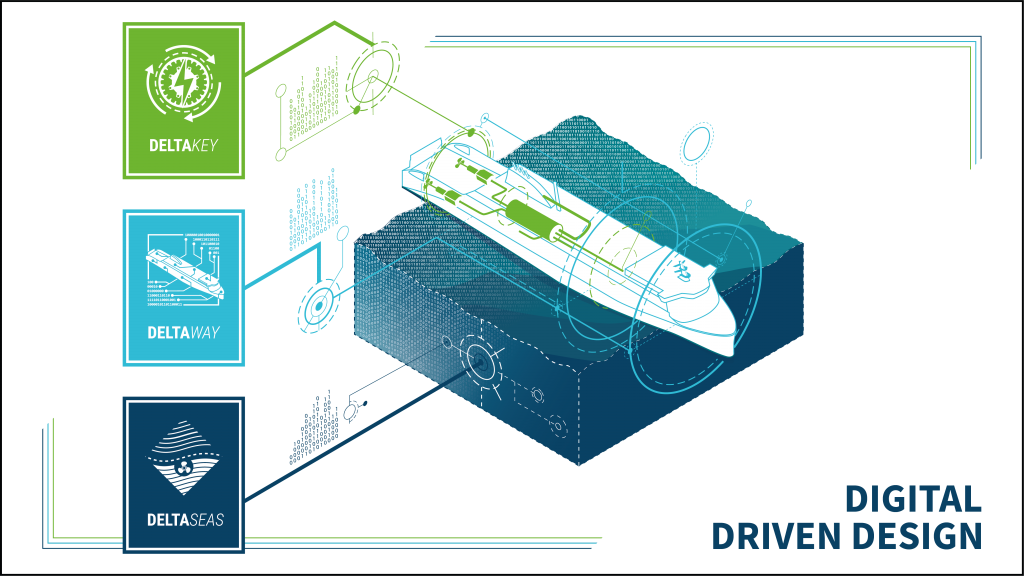The digitalisation of the maritime industry is giving new possibilities for managing and optimising ship life-cycle performance. For instance, the available data and digital models of existing ships can help in designing the new generation of vessels, so the so-called digital thread of a new ship is formed as early as during the ship’s early concept design phase.
A clear benefit of digital design started early is that the ship is designed for her actual operating conditions, whatever they may be. The design process can also include a large number of variations, for future-proofing purposes, or as part of the natural optimisation of the systems. The key performance indicators for the ship are followed during its entire life cycle. Other benefits are that a feasible design is formed quite rapidly with reliable track records backing up the solutions. The digital design inherently enables a high grade of interactivity between the designer and customer. We provide a small example of how digital design key performance indicators can look at our digital design portal.
At Deltamarin, the digital design process can be divided into three important areas. In practice, they are heavily interconnected, but they also serve specific purposes. One of these important “layers” of digital design is the energy simulation layer focusing on the processes inside the ship. The purpose of these simulations is to evaluate the ship’s environmental performance and recognise options for increased energy efficiency. Our energy modelling platform is called DeltaKey. DeltaKey is utilised all the way from early concept design to operational phase support.
The second layer is the digital model of the ship including the physical dimensions and ship behaviour for eventual ship-building purposes, and before this, pricing purposes. The purpose is not only to maximise ship cargo capacity but also to maintain high efficiency in the ship hull and equipment. In-house, we have developed a platform and design process for this called DeltaWay. It is a platform for ship design that connects a large number of our own and external databases, reference data and constantly changing design data from various disciplines. The platform enables rapid and visual feedback for both our customers and our own design team regarding any alternatives that are studied. The DeltaWay method also enables utilisation of new technologies that can further support ship design and the building process by enhancing interactivity and communication, such as virtual reality and augmented reality. The concrete toolset for DeltaWay has so far been most developed/utilised for ro-pax ship types and, in general, for ship types with a high level of customisation.
The third part of the digital design process is the “data layer” connecting the ship to her environment, especially regarding hull performance. The main result of this stage is a propulsion power profile for the ship’s lifetime. For this purpose, we have developed an analysis tool called DeltaSeas that essentially connects the ship’s hull with various operating strategies, operating areas and the environmental conditions expected during the ship’s lifetime.

For more information, please contact

Director, Sales & Marketing
Tel. +358 2 4336 344
Mobile +358 40 834 8112
esa.jokioinen@deltamarin.com

